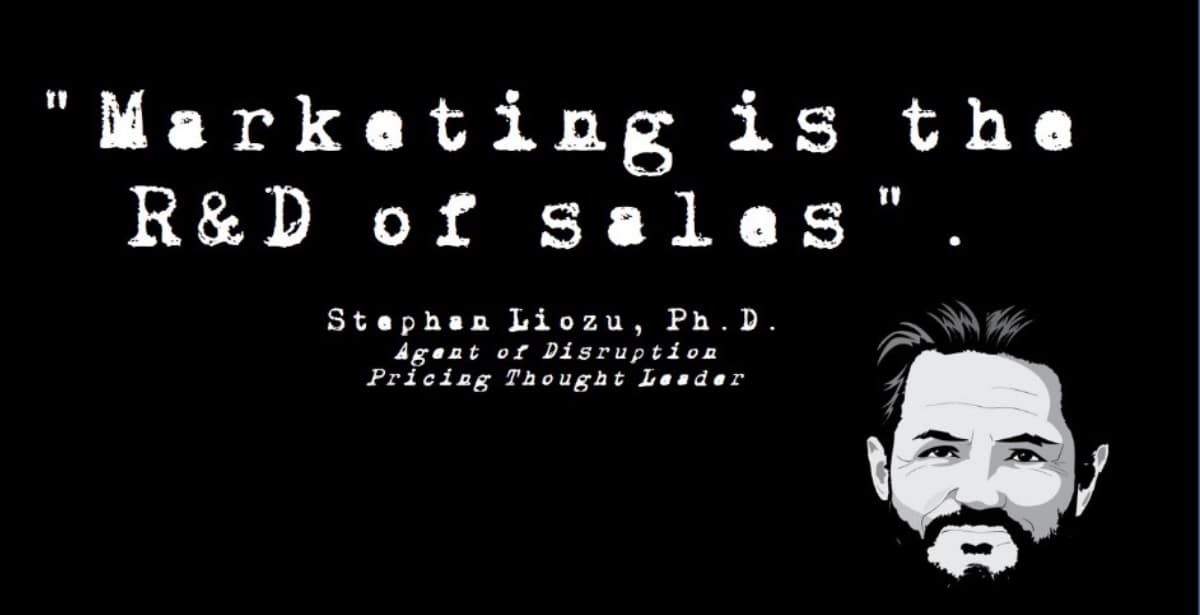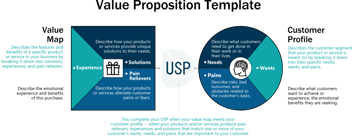Using the Value Toolbox into Successful Value-based Selling Programs

Value-based selling programs must be prepared carefully with the right objectives in mind and the right content. In this department, content is key. I often get the question of who is responsible for putting together the overall value playbook supporting the value-based selling curriculum. My response is simple - Marketing is in charge and must pull information from various departments such as market intelligence, customer success, strategy, pricing, and more. Marketing leaders often forget that they are the R&D of sales. They must work hard in preparation for these training events. And first impressions matter.

After decades of experience in value-based programs, I have been exposed to, used, and created many value tools that are used by marketing and pricing professionals to train the salesforce on how to become value champions. I created a list of fifty-five value tools that are commonly used in value-based strategies to advance the customer value agenda. [1]
I do not recommend the use of all these tools. Pick the five or six most relevant ones to support your training and learning agenda. The most used tools are listed in the visual below:

- Value selling sheets are one or two-page documents summarizing key points for the sales force on products and services. They list key differentiators, key benefits, and key features for what you are selling. They are used internally to prepare for sales calls. Many of these points must be memorized so they can be used fluently during value conversations.
- Business Value Assessments (BVA) are documents used to demonstrate the ROI and financial value of a specific deal or opportunity. Sales representatives produce these for qualified leads and opportunities from a Customer Value Management platform such as ValueCloud® [2].
- Dollarized value propositions can be a PDF or a PowerPoint document demonstrating the economic value of an offer. They represent another way of doing a BVA but they look more like a well-designed customer value proposition than a financial business case.
- Pricing objection guides offer a list of the top 10 or 15 pricing objections commonly used by customers and prospects with a relevant value response for each of them. They are used internally for training, role-playing, and onboarding of new sales reps.
- Value messages are closely tied to the true company or product differentiators and are projected non-stop to customers during multiple touchpoints. These are listed in a Word document and shared with any employee with customer-facing activities. These are the “Did you know that...?” of the day. For example, “Did you know we created nine out of the last 10 industry innovations?” Or “Did you know that our technical XYZ solution secured the most demanding industrial facilities in the world?”; and finally, “Did you know that we saved our industry $2 billion in unnecessary costs?”
- Documented value success stories are case studies that have a quantified economic value component. They go a step further than regular customer or application case studies. They should contain a quantified value scenario for an application, an end-use, or a customer situation. Often, these are proposed on the website as value stories. These also need to be automated out of a Customer Value Management platform to avoid manual work.
- Value realization reports are produced by your Customer Value Management platform and are used in Quarterly Business Review meetings with your customers [3]. These reports serve as progress reports on the value delivered and realized value to your customers. Remember that it is all about realizing the economic value you promised in exchange for closing deals with, ideally, a higher average selling price.
I would recommend selecting these seven tools and including them in your value toolbox. These documents need to be prepared in advance using a multi-functional approach with input from sales, marketing, pricing, services, customer success, and others. They need to be battle-tested before being used in value-based training sessions. Make sure the content and the value numbers are credible or you will have an adverse reaction during the training. Value-based selling challenges teams and takes them out of their comfort zone. Do not give them a chance to cop out because the documents are improvised, unprofessional, or not credible. Preparation is key.
In the first blog of this series, we talked about some of the considerations to design and deploy your value-based selling programs. This second blog focuses on the value toolbox and the selection of the right value tools to support your training and learning agenda. In the next blog, I will focus on designing your value-based selling training program for success. It is not business as usual, and you need to work with your training and development team. Finally, you need to be creative and adapt to your learning culture. More on that topic in the next blog.
Bio

Dr. Stephan Liozu (www.stephanliozu.com) is the Founder of Value Innoruption Advisors (www.valueinnoruption.com), a consulting boutique specializing in industrial pricing, digital business, and value models, and value-based pricing. Stephan has 30 years of experience in the industrial and manufacturing sectors with companies like Owens Corning, Saint-Gobain, Freudenberg, and Thales. He holds a Ph.D. In Management from Case Western Reserve University, and has written several books, including Dollarizing Differentiation Value (2016) and Value Mindset (2017).
[1] Value Mindset: Accelerate Your Value Transformation by Changing Your Mindset: Liozu PhD, Stephan M.: 9781945815027: Books - Amazon

 ValueCloud
ValueCloud
.png?width=118&height=76&name=Rectangle%20(3).png) ValueCloud Ignite
ValueCloud Ignite
.png?width=92&height=92&name=Rectangle%20(4).png) Free Assessment
Free Assessment
.png?width=100&height=100&name=Rectangle%20(5).png) Watch a Demo
Watch a Demo
.png?width=82&height=96&name=Rectangle%20(6).png) Value Calculator
Value Calculator

.png?width=62&height=51&name=Group%2010%20(1).png) Marketing
Marketing
 Sales
Sales
 Customer Success
Customer Success
 Engage Prospects
Engage Prospects
 Win Deals Faster
Win Deals Faster
 Retain Customers
Retain Customers
.png?width=62&height=62&name=Rectangle%20(8).png) Adopt and Scale
Adopt and Scale
.png?width=54&height=54&name=Rectangle%20(9).png) Cybersecurity
Cybersecurity
 Healthcare
Healthcare
.png?width=54&height=54&name=Rectangle%20(10).png) IT & Software
IT & Software





